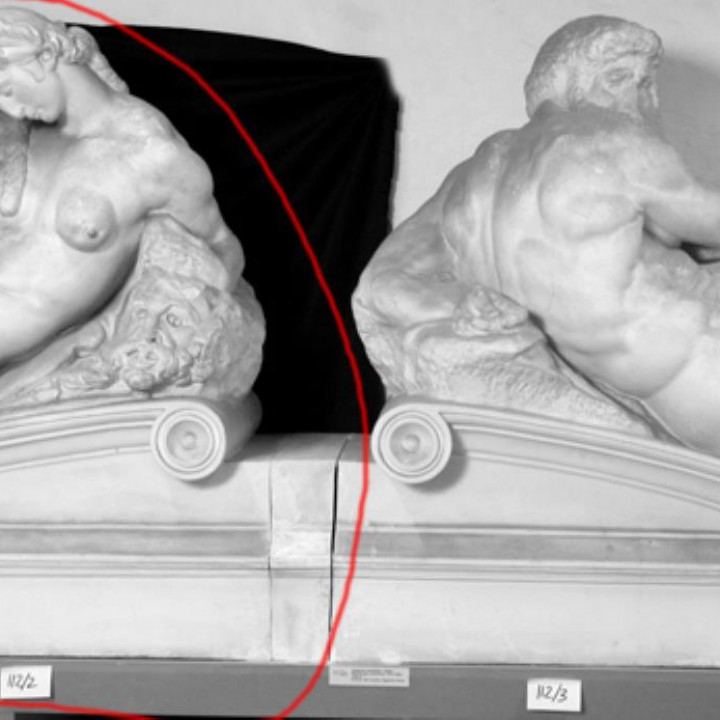
Night
myminifactory
Of the two Times of the Day reclining on the sarcophagus at Giuliano's feet, Night is certainly the more famous one, for literary as well as artistic reasons, as Vasari's 1550 edition of the Lives already included the quatrain by Giovan Battista di Lorenzo Strozzi called il Vecchio: The sweetly sleeping Night on which you lookhas all the life an angel's hand could give to stone;and thus, because she sleeps, she lives:wake her, if you still doubt it; she will speak - an ode to the statue according to the topos of the illusion of life hidden there - and Michelangelo's proud answer in the name of Night itself: Precious is sleep, better to be of stone,while the oppression and the shame still last;not seeing and not hearing, I am blest;so do not wake me, hush! keep your voice down alluding to the dramatic political situation in Florence and Italy. In light of Michelangelo's lines of poetry, Vasari's comment on the Night is not just a naturalistic one limited to words like "the stillness of one who sleeps" and "in the slumber of this figure may be seen the living image of sleep"; when he mentions "the sorrow and melancholy of one who has lost something great and worthy" he is referring to its psychological aspect of the figure as well. Because of its numerous attributes if compared with the other statues on the sarcophagi, Night seems to be more directly related to the planning stage visible in a drawing, a copy of the lost original by Michelangelo, where the reclining female and male figures respectively bear the crescent moon and the rays of the sun to indicate their identities. Lying in the pose of a sleeping figure on a cloth one end of which covers her thigh, she wears a diadem with a crescent moon and a star on her forehead, which, along with a veil, holds still her parted hair ending with a heavy braid on her breast. Close to her arm is a mask representing deceitful dreams, while a nocturnal bird of prey, an owl, looks out from the space under her leg, and a bundle of poppy capsules alluding to sleep is below her foot. Because there are no symbols in the other three statues it is difficult to identify them, and their names are indeed a vexata quaestio; according to Raffaello Borghini (1584), what they were actually called depended entirely on the oral tradition recorded by Vasari, who handed them over to the printed literature on the arts with the first edition of the Lives. But Michelangelo himself had at least written the names of the Day and Night in his drawing with profiles of bases for the Sacristy. [text - michelangelo.org]
With this file you will be able to print Night with your 3D printer. Click on the button and save the file on your computer to work, edit or customize your design. You can also find more 3D designs for printers on Night.
